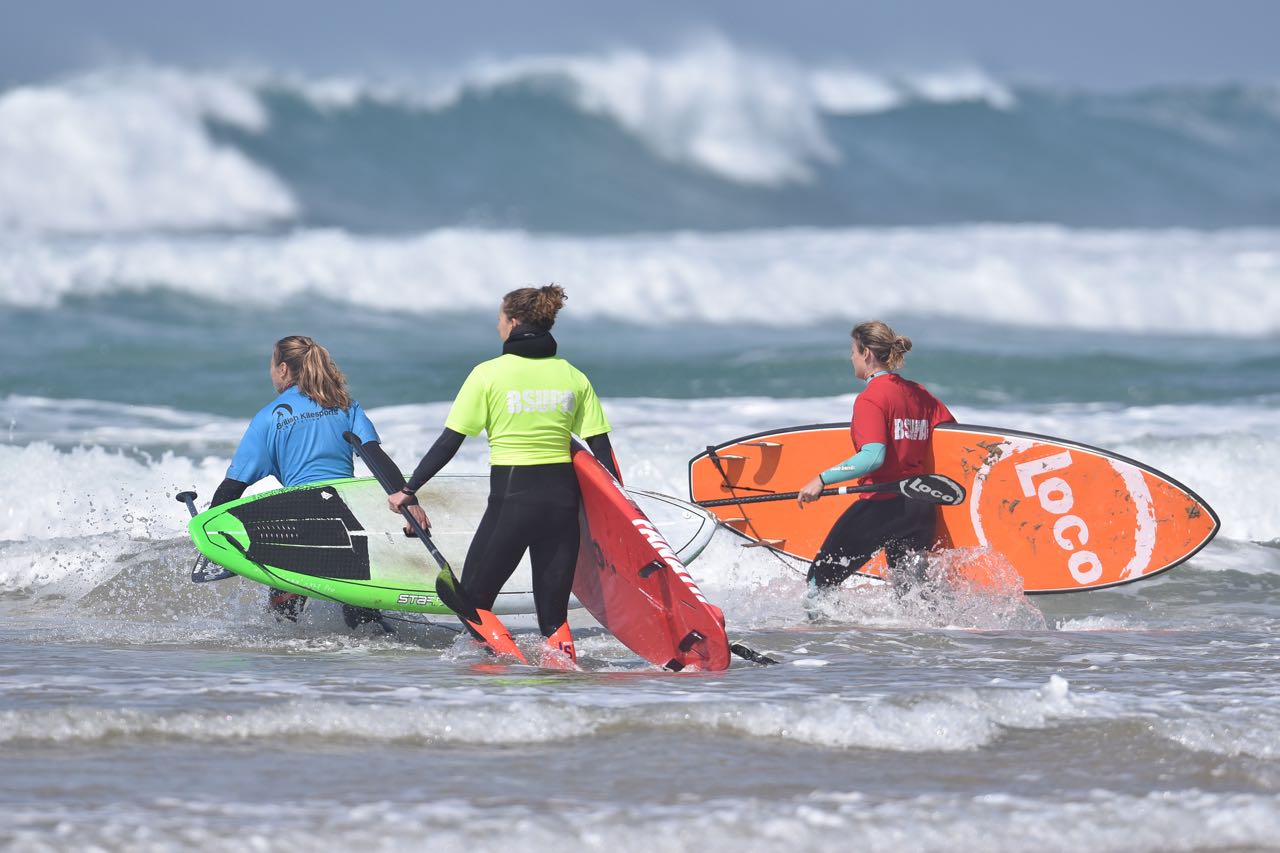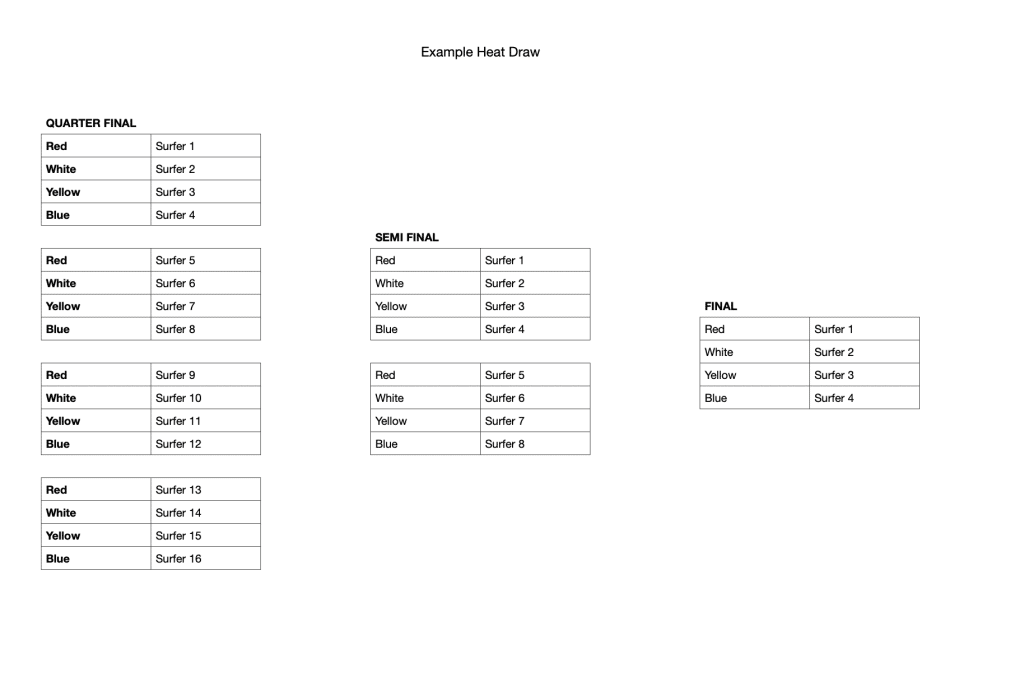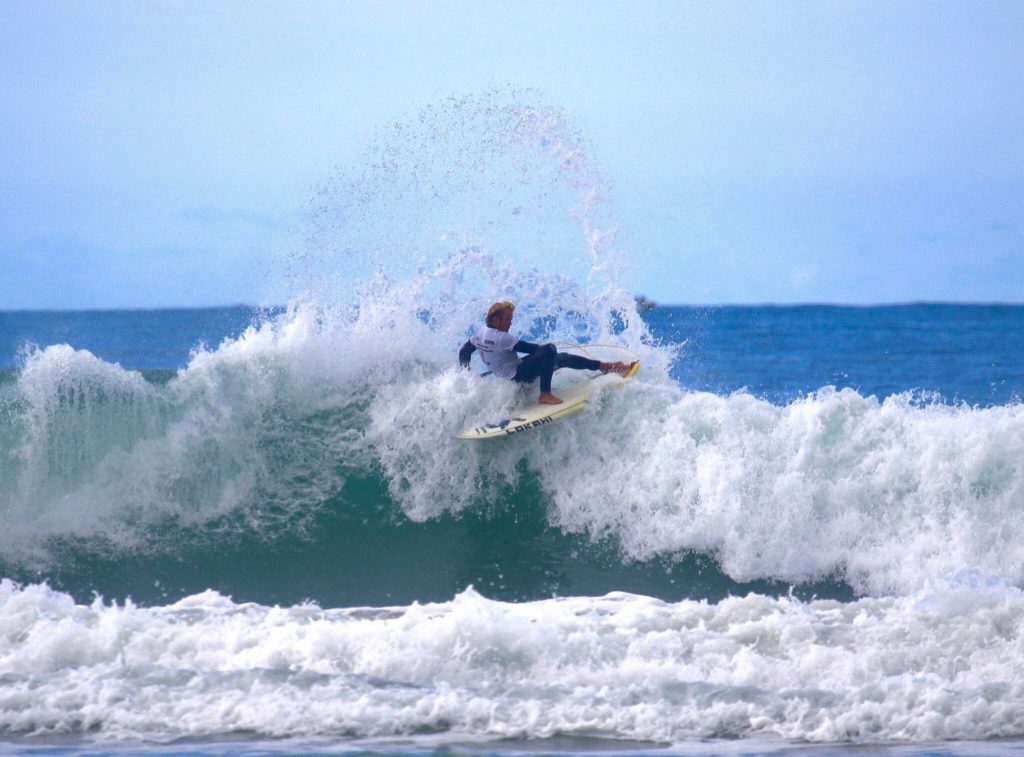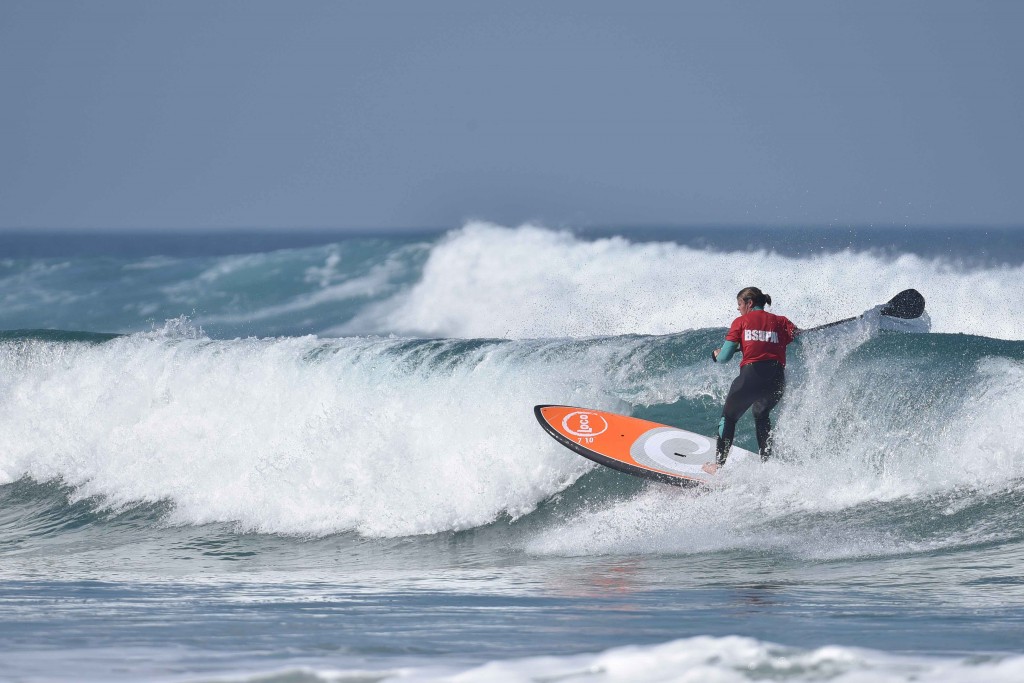
With SUP surfing contests back up and running after a long hiatus, we though it might be useful for you know how a SUP surfing contest is run. If you're competing for the first time, or need a little reminder how it works, read on to learn what to do when you get to the beach.
Tina Beresford has contributed to this article to help SUP surfers competing in the 2022 English National Stand-Up Paddle Surfing Championships for next weekend, June 25-26. Tina is a British National SUP champion and has countless years of competition experience.
SUP surf contests are a fun way to get involved with the SUP surfing community and test your skills out against other competitors. You can go into an event with the aim of placing on the podium, but remember to enjoy the journey, meet new friends and relish in a new experience as it’s about having fun.
Here’s how a SUP surf competition is generally run.
Event organisers will send out details calling for competitors to enter an upcoming event. You will pay an entry fee and maybe a membership fee to the organisers which helps the organisation run future events and entitles you to benefits like insurance, discounts with brand partners and joining a community.
The contest usually has a cap on entry numbers, and the final entry numbers are then allocated spots in the draw. The draw is made of heats which include a small number of surfers (usually 4 surfers in each heat, but it can be between 2 – 6). Depending on how many surfers have entered, the heats will be spread out across rounds. For example, if 16 surfers enter, there will be a round of 16 with four heats, with 4 surfers in each heat. This round is also known as the quarter finals as there are four heats. To progress to the next round, competitors must place in the top 50% in the heat (if there are four surfers in a heat, you need to place 1st or 2nd to progress. Third and fourth will be eliminated). The next round then consists of 8 surfers as the field has been halved, this is also known as the semi finals as there are only 2 heats. Again, 1st and 2nd will progress to the next heat which is the Final with 4 surfers battling it out for the win.
If by chance a heat only consists of 3 surfers, then the top two surfers will progress to fill the spots in the next heat.
 • Heats will last approximately 20 minutes, but this might be extended or shortened subject to the conditions and the head judge’s ruling on the day.
• Heats will last approximately 20 minutes, but this might be extended or shortened subject to the conditions and the head judge’s ruling on the day.
• Surfers will wear a coloured rash guard in which they need to collect from the beach marshal before their heat. This is so the judges can identify you when out in the water.
To progress through each heat, you must surf to the Judging Criteria and receive scores that allow you to place in the top 50%. There will be a number of judges watching each heat and scoring every wave that is surfed. Each wave is scored out of a possible 10 points, with your two highest waves counting toward your heat total. You can catch a maximum of 10 or 15 waves, which the head judge will confirm on competition day.
The scale of points is outlined below;
• Poor = 0.1 – 1.9
• Fair = 2.0 – 3.9
• Average = 4.0 – 5.9
• Good = 6.0 – 7.9
• Excellent – 8.0 – 10
The Judging Criteria is as follows for ISA SUP events;
A surfer must perform radical controlled manoeuvres, using the paddle as a key tool, in the critical sections of a wave with speed, power and flow to maximise scoring potential. Innovative / progressive surfing as well as variety of repertoire [manoeuvres], wave negotiation and use of the paddle to increase the intensity of the manoeuvres, will all be taken into account when awarding points for SUP surfing.
The SUP surfer who executes these criteria with the maximum degree of difficulty and commitment on the waves will be rewarded with the higher scores.

The biggest takeaways from the judging criteria which you should focus on are;
- Use your paddle as a key tool during your manoeuvres. Learning on, switching sides and using your paddle effectively (LINK) will score you the biggest points. If you don’t use the paddle or hold it in the air, you will not receive many points
- Variety of repertoire: try and mix up your turns to score the most points. Don’t do the same turn over and over again as this will hinder your scoring potential.
- Place your turns in the critical section of the wave, which is in the pocket. Doing turns on the open face or shoulder won’t get you the highest points.
- If you can take a bigger wave, show speed, power and flow and commitment on the very first turn, you will be rewarded very well. The first turn on a wave is a high risk manoeuvre because if you fall, you lose the scoring potential of the wave.
- Finish your waves. Falling off at the end of a wave leaves a bad impression. If you can make a good impression to the judges at the start and end of your wave, you’ll get a high score.
- You will be awarded a penalty or interference if you drop in or get in the way of other surfers during the heat.

What You Need To Do On Competition Day
- You should arrive at the beach at least half an hour before the start of competition so you can familiarise yourself with the conditions and which heat you will be surfing in. For Surfing England Events, these are the steps you need to follow when arriving at the beach;
- The running order and heat draw will be posted on a notice board outside the marshalling tent on the beach. It’s usually posted half an hour before the start of competition.
- The contest area will be flagged and you must surf within the flagged area for your waves to be scored.
- When you know which heat you are in, you must check in with the beach marshal at the tent roughly 10-15 minutes before your heat starts. This is where you collect your coloured rash guard and it must be put on when you pick it up, and only taken off when you come back to the marshalling tent after your heat has ended.
- Surfers will generally be allowed a paddle out time of 5 minutes. This means you cannot enter the water more than 5 minutes before the end of the heat before yours. If you do, you risk being penalised.
- There will be a coloured disc on the beach, usually green on one side and red or yellow on the other. Green signals the start of the heat, whilst red or yellow signals there are 5 minutes left in the heat.
- When you are down at the water’s edge, look for the coloured disc changing to red or yellow before paddling out for your heat.
- When paddling out, do not paddle straight out in front of the heat currently surfing. Try and paddle out outside the contest area, so at least walk past the flagged area to paddle out. As you reach the outside and your heat is about to begin, you can make your way into the contest zone, but make sure to not get in the way of current competitors.
- A double horn blast from the judging tent will signify the end of a heat.
- A single horn blast will signify the start of a heat. This discs will be changed accordingly.
- There will be a gap of time between the end of a heat and the start of the next one. If you are a surfer waiting for your heat to begin, do not catch a wave during this gap in time because you will not be scored.
- If you are catching a wave at the end of the heat, you must have caught the wave prior to the first sound of the horn to signal the end of the heat, otherwise it will not be scored.
- Once the heat has ended, do not surf a wave into the beach and perform manoeuvres or turns. Generally you will need to lay down on your board and make your way into the beach, or paddle in without caching a wave. Standing up and riding a wave may confuse the judges for the next heat and this could result in a penalty.
- Remember to wear your rash guard to the marshalling tent and take it off when you get there. Results will be posted on the notice board and generally read out by the beach announcer.
What You Should Bring To The Beach
- All your SUP surf gear (board, paddle, leash, wetsuit). Bring spares too if you can.
- Food for energy, as surfing heats is quite demanding
- Water
- Sunscreen
- Hat
- A good attitude
This was put together for the SUP surfers competing in the upcoming event, the 2022 English National Stand-Up Paddle Surfing Championships held next weekend, June 25-26. Click Here to enter.
















Great article!! I hope to enter a surf sup contest to meet other supboarders and learn form the best! It should be a great experience! Keep up the (really) great work! Thanks